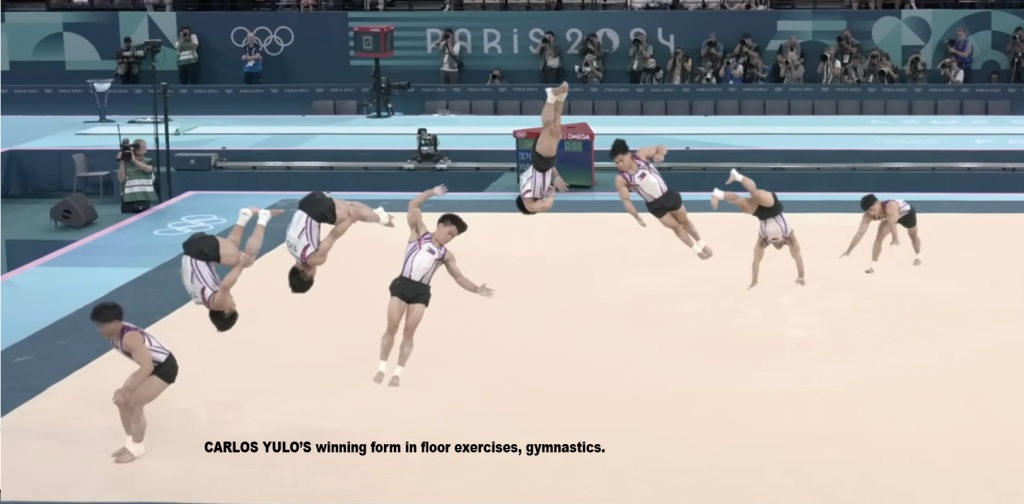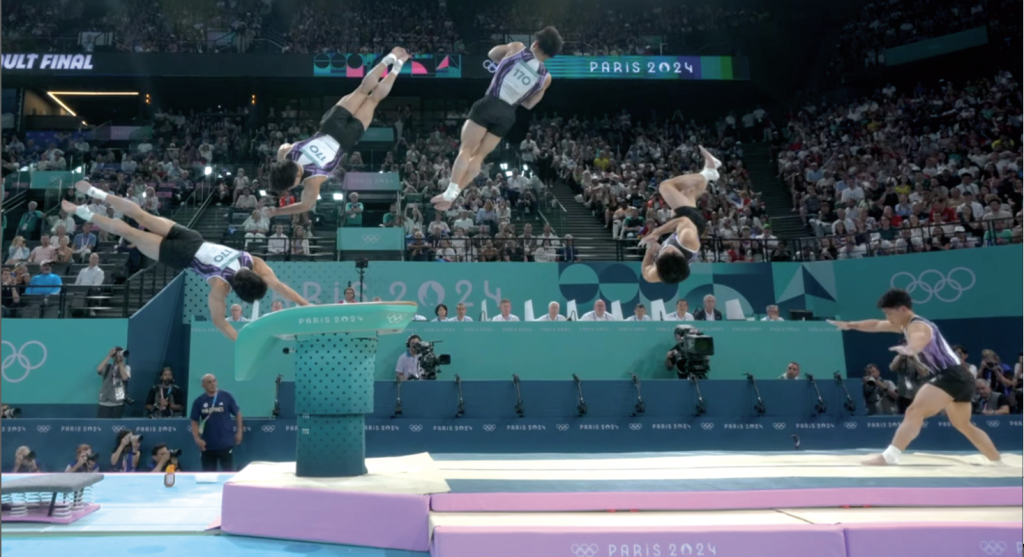By TONY LOPEZ

Did you know that the Philippine government budgeted only P52 million to prepare, train, and send our athletes to the Paris Olympics?
For that money, the Philippines so far has won two golds and possibly will win two bronzes, if not silvers, (from boxing) during the 100th year anniversary of the Games in Paris where Manila is making its 23rd Olympics appearance.
On Aug. 3, Carlos Yulo won the gold in floor exercise, artistic gymnastics, and on Aug. 4, his second gold, this time in men’s vault, artistic gymnastics.
With two Olympiad golds (each with six grams of pure gold, worth $1,027 plus a bit of Eiffel metal) by spending just P52 million, the cost per gold medal for the Philippines is only P26 million. Per capita with a population of 116 million, the Philippines has one Olympic gold for every 58 million Filipinos. Well, not bad.
India, with a population of 1.4 billion, so far has zero gold in Paris. In Tokyo, India won one gold, or one gold for every 1,400 million Indians.
With two gold medals, the Philippines ranks 21st out of 206 participating countries and territories, No. 1 in ASEAN, and No. 5 out of 44 Asian countries, in the 2024 Paris Olympiad, in gold medal tally.


According to University of the Philippines study years ago, up to 40% of the government’s annual budget or the General Appropriations Act (GAA) is stolen.
The GAA in 2024 is P5,767.6 billion (P5.767 trillion) of which only P52 million went to the training and expedition of 22 Filipino athletes to Paris, or about P2.36 million per participant, including Yulo.
In effect, for spending P2.36 million for Caloy, the Philippines got one gold for every P1.18 million.
If the 40% of the P5.767 trillion that is stolen (which may explain the massive floods that inundated Metro Manila and most of Luzon last July 23 and 24, 2024, because the government spends more than P1 billion for every work day for flood control that cannot control floods; that is P2.3 trillion literally down the drain), were diverted to sports, we could possibly win hundreds of Olympic medals.
Divide P2.3 trillion by P26 million, that is 88,461 gold medals. Statistically, though winning 88,461 gold medals is not possible. There are only 329 gold events in Paris.
In Olympics, there are two proven ways to success—genes and money.
Some nationalities are predisposed to excel in sports.
According to Randall Wilber of the US Olympics Committee and Yannis Pitsiladis of the University of Brighton, “since the 1968 Mexico City Olympics, Kenyan and Ethiopian runners have dominated the middle- and long-distance events in athletics and have exhibited comparable dominance in international cross-country and road-racing competition.”
Among the factors for their excellence: 1) genetic predisposition, 2) development of a high maximal oxygen uptake as a result of extensive walking and running at an early age, 3) relatively high hemoglobin and hematocrit, 4) development of good metabolic “economy/efficiency” based on somatotype and lower limb characteristics, 5) favorable skeletal-muscle-fiber composition and oxidative enzyme profile, 6) traditional Kenyan/Ethiopian diet, 7) living and training at altitude, and 8) motivation to achieve economic success.
GDP and sports
The richer a country is in GDP, the higher are its chances of winning Olympics medals.
In the past 20 years of the Olympics, the winningest countries have been: 1) United States, 816 medals; 2) Russia 559; 3) China 535; 4) Germany 441; 5) Britain 321; 6) France 299; 7) Australia 281; 8) Japan 264; 9) Canada 257; and 10) Italy 253.
In nominal GDP, the richest countries are in US trillion dollars: 1) USA $27.36; 2) China $17.94; 3) Germany $4.45; 4) Japan $4.21; 5) India $3.55; 6) UK $3.34; 7) Italy $2.25; 8) Brazil $2.17; 9) Canada $2.14; and 10) Russia $2.02.
Per Wikipedia, Russian medal winners have historically been gifted expensive premium cars valued at $50,000 to $200,000 and luxury apartments valued at $500,000 to $1,000,000 in addition to separate payouts from national federations and regional governments. That tradition stretches back to the Soviet era.
PSC budget
Our Philippine Sports Commission has a P112 million budget for “amateur sports promotion and development”. PSC itself has a 2024 budget of P1.156 billion. Most of that money PSC spends for itself, its bureaucracy—P69 million in payroll, P782 million in maintenance and operations, and P295 million in capital outlay.
Each of our senators has an annual pork of P200 million or P1.2 billion in six years. The Senate donated P30 million to the Philippine athletes in Paris; of that money, P23 million came from just one senator, Risa Hontiveros. Some senators did not part away with their pork.
A statue for Yulo?
I am sure when Caloy Yulo returns a hero in Manila, the Senate will allocate princely sums to honor him. Or maybe, pass a bill to erect a statue (bronze will do) in his honor in front of the spanking new P30-billion Senate building in Taguig. After all, gymnastics is far more exciting and thrilling than the verbal calisthenics inside a Senate session hall, what with its six actors and two broadcasters as members.
With his unprecedented two golds, Yulo comes home a multi-millionaire. By law, the government awards a gold winner P10 million or P20 million for two golds.
The House of Representatives has pledged P3 million per gold. Andrew Tan’s Megaworld will give a three-bedroom condo in Mckinley Hill worth P35 million.
Meanwhile, in July 2023, Cynthia Carrion sent an effusive thank you note to Manuel V. Pangilinan for his total support for Philippine gymnastics and for being the first to respond to her call for funds to train Carlos in Japan. Last week, that support paid off, handsomely, for the country and our people.
